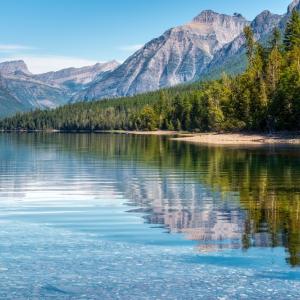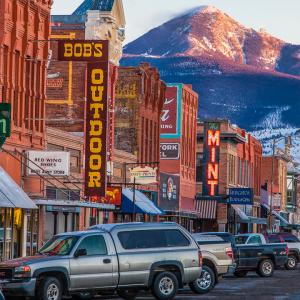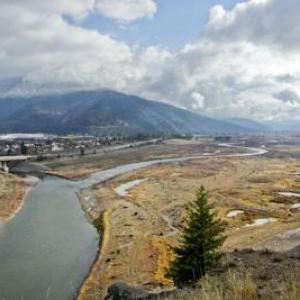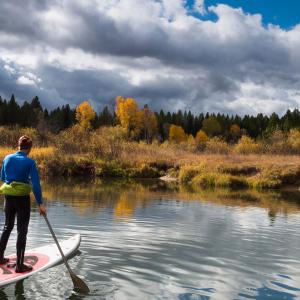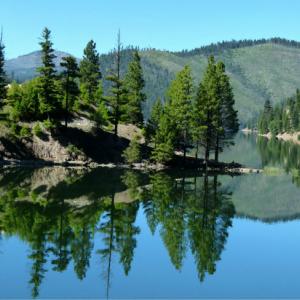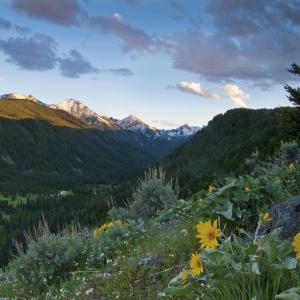The Metalsmith Art of Glenn Gilmore
~Brian D’Ambrosio
Metal is intrigue, bravery, and its own trust.
Eyes wide open inside a protective shield, the metalsmith is unsure of how such a hard, solid state is going to respond, it’s a lot like staring into the abyss.
Another one of its points is that it’s stubborn; its character will hold you accountable. Press it too hard it’ll resist and you’ll need to pound it all over again from scratch. Go to light on it and it’ll never furnish you with the respect or physical advantage you’ll need to complete the task.
It’s in this posture of vulnerability, liability, and genuine desire that the aspects of metalsmithing have been revealed to Glenn Gilmore.
“You need to take responsibility for every decision that you make, whether it’s good or bad,” said Corvallis metalsmith Glenn Gilmore. “You need to pay attention all of the time that you are working and you need to be focused on what you are doing. You need to think positively about what it is you are making, so that what you create is worthwhile. The way that you refer to it is in the end what you are going to make. If you use it to take your frustrations out, and that’s what it will look like – frustrations. If you take a positive approach, you will create a positive object.”
Visually pleasing is a bit of an understatement to describe Gilmore’s work. For certain, it is just that – aesthetically gratifying, the beauty of vigor and dynamism, which lies not only in its artistry but its utility. In fact he can create something that could ring true or fit into almost any setting and he can design it agreeably with his own strong definition of uncluttered and clear craftsmanship. But to best understand Gilmore’s temperament is to realize that he is obsessively particular about dimensions, straight down to the strict a thousandth of an inch he can achieve with one of his diameter machines. He is also wise and experienced enough to factor in planning for the unplanned.
“A railing or a metal piece can be accurate here in the shop but that can change when I go out to install it. A lot of what I do is problem solving,” said Gilmore, who once required 10,000 pounds (5 tons) of metal for the interior and exterior fireplaces and light fixtures of a single home. “One of the things about the work that is so enjoyable, is just figuring all this stuff out.”
Gilmore, who was born and raised in Michigan and was first drawn to blacksmithing while watching horseshoeing procedures on ranches in New Mexico, can easily recall some of the influential events that led him to the soul and kick of metalsmithing.
“Near Lansing I took a machine shop class and I went to an automobile hood pressing factory which stamped the hoods of the cars in one big blow. That was back when Oldsmobile cast their own engine blocks, and I saw photos of that process too, because the facility was closed. I remember going to bicycle shops and Schwinn in Chicago and it had this friction welder steer tube (attached) to the front fork, flat-bladed on bike forks. They’d spin it so fast it’d melt and weld together. I liked all of that old equipment.”
In Gilmore’s lifetime he has witnessed such a dramatic change in forging technology, evolving from the hand-pressed results derived from the steam hammers to machine-oriented hydraulics. In the process, much of the original metal used to build, repair, fix and further the growth of America’s 20th century infrastructure has been melted down and recycled.
“Metal or steel are not materials that a lot of people think of as precious metals,” said Gilmore. “I’ll find big scraps of the old stuff here and there; but you can make all kinds of things out of it. I did this candleholder, with the center shaft made from an inch round piece from old railroad yard ties. It was holding the rails together all those years and it ended up a candleholder in someone’s house.”
Singled out for many accolades over the course of several decades, Gilmore’s reputation stems as much from his sleek design concepts as it does the fiery self expression enmeshed in his artistic ironwork. Simply affirmed, he is both in demand and on the go. Practicing metalsmithing full-time since 1974, Gilmore has now devised the perfect relationship with many of his clients; they own the idea in their minds as to the finished product, yet they rely on him to freely design and interpret it into the metal installation of their choice, whether it’s a fireplace or a railing or a sleek forged steel table. Indeed, there is one trusted client whom Gilmore has been working with since the late 1980s; after a recent installation in March 2017, he didn’t even have to submit a single drawing. From shiny fireplace fittings to furniture to thick railings adorned with the free-form bending of leaves or pinecones, Gilmore has earned a stellar living following the stroke of his intuition.
Indeed, the freedom to create the conversation piece has been a lifelong quest for Gilmore, the son of educators who instilled in him an inquisitive nature and a respect for learning processes. After he attended farrier school in Michigan, he advanced into forged metal work and soon felt a certain admiration for the hot tip of the coal forges. He attended conferences across the country and joined clubs and befriended other metalsmiths who were interested in ornamental work. He was intensely influenced when he traveled to Germany in 1985, where he enrolled in additional classes and visited a number of shops.
Gilmore, 67, said that blacksmithing, once a sharply fading novelty, continues to spike in the quantity of people participating in it as either a hobby or full-fledged career.
“In the 1950s and ‘60s it was dying out,” said Gilmore, who moved to the Bitterroot Valley in 2000. “The blacksmiths were kind of contained to little shops and little towns and that was it. In the late 60s an interest renewed in blacksmithing again, and it was more accepted into universities and their art departments and there was this new approach, but with the same old techniques. We still use the basic blacksmithing techniques which go back hundreds of years. Whether it’s a 9,000-pound piece of steel it still has the same process of a one-pound piece of steel, it’s the same forging process to get to the final shape, or punch a hole in it, or to draw it out to make it longer and thinner.”
Sometime ago Gilmore was asked if he could be photographed for an exhibit on blacksmithing which was included in the Brookfield Craft Center SoNo Gallery in Norwalk, CT, and the photographer, who was drawn to his thick, sinewy hands, ended up distributing an entire page of images of his hands in different poses. Perhaps that’s no surprise since his hands perpetually live and move and have his being.
“I’m always looking at the work, even at lunch, asking questions like, is it straight? Or is there a littlebow there?”
On this bright blue morning in the center of the Bitterroot Valley, the stress of winter has finally receded and the pangs of spring’s joy have buried the memories of another deep, dark winter. Here, Gilmore works with sun-like energy in a 1,600 square foot studio near Corvallis, offering eye-moving views of both the Bitterroot and Sapphire Mountains.
Metaphorically speaking, his shop is his place of silence in a world full of noise. Though he’s swinging hammers and thudding steel, something about the process quiets him, calms him, and stills him. He is of course surrounded by dozens of tongs, vices and hammers, and a mixture of both old and new technologies, including a pair of 1920s pneumatic forging hammers, one made for a boiler company and the other for the automotive industry. With such devices, he gives a brief demonstration in which he compares steel to modeling clay, since both materials react and respond to heat similarly.
He speaks the language of the blacksmith with animation, discussing critical temperatures at maximum hardness, freezing, tempering, the re-introducing of heat, removing stress out of hardened material, and also conversing about metal that is brittle or metal that needs to be softened or cooled or quenched. Weathered surface or bark textures, the rigidity and structure of heat molecules – it’s a wide spectrum of curiously connected topics. He demonstrates how and why a slab of metal can hold an edge and just why it won’t break. Lungs breathing and heart pounding, he explains all of the undertakings going on inside of a piece of metal that you don’t see, how to figure or discern temperatures through the examination of colors, glowing candescent or brilliant incandescent.
The artist in Gilmore understands that in life joy is the decisive test and diligence is the key to figuring it all out. He’s not concerned with trying to figure out how to navigate a world in constant flux. Gilmore just wants to be hard at it and productive.
“When I’m working on something I’m way too worried about everything fitting and worried about running into something that’s going to be an issue. When it’s successfully installed it’s a relief. But, then soon you are thinking about the next project. If it’s what you do, and if you are finished, then you need another one lined up.”
